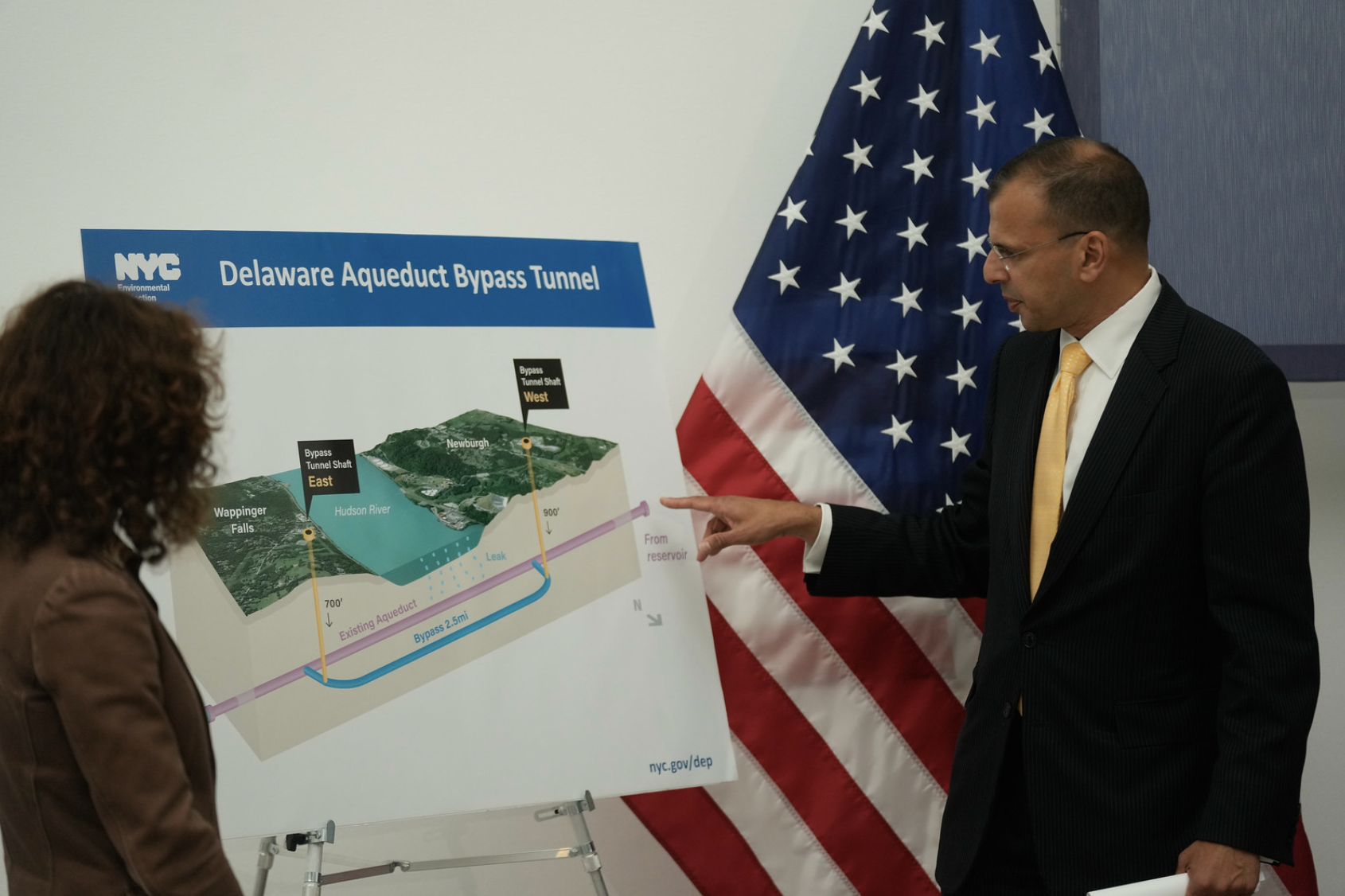
The mayor tasted a sample of the new water at the press conference on Delaware Aqueduct Bypass at Queens Museum on Monday.
Photo by Michael Appleton/Mayoral Photography Office
Tap water may taste a bit different in the coming months amid the start of repairs on the city’s water supply system, officials announced at the Queens Museum in Corona on Monday.
Situated underneath the Hudson River, the Delaware Aqueduct serves as the main water delivery system for faucets around the city. However, the 79-year-old tunnel is currently ejecting 35 million gallons of water, equivalent to 50 Olympic-sized swimming pools, daily.
The major infrastructure project will repair the significant leak by draining the tunnel and bypassing the flow of water through a recently constructed tunnel about 100 feet below. Once the bypass is in service, the water will taste the same as it does today.
“New Yorkers should know that your water is going to taste a little slightly different. Some of you are not going to pick it up, but some of you will. But it’s still perfectly safe, good water,” said Mayor Eric Adams before taking a sip from a cup of water at the conference, noting, “I can’t taste it.”
The officials ensured that the project would not adversely affect water quality and discouraged New Yorkers from switching to bottled water during the process. But slight variations in taste and smell could be noticed by those with sensitive palates.

“Our water costs about a penny a gallon, it is New York’s greatest bargain, and it is absolutely the safest and healthiest choice for your family,” said Department of Environmental Protection Commissioner Rit Aggarwala. “We should drink as much of that and as little bottled water as possible.”
Fixing the leak and securing the water supply for future generations will become the DEP’s largest repair project to date, estimated to cost $2 billion. The reroute of water through the new tunnel will take at least six months to complete.
“It’s a big project, but I want to assure New Yorkers that we are ready for this, and we have planned for every scenario,” added Aggarwala.
In the worst-case scenario, the commissioner noted that they have ample water reserves to last the duration of the project. They also made the decision to kick off the project in the colder months because less water is used by residents.
City Council Member James Gennaro, who recalled talks of this project when he took office over two decades ago, praised the city officials for the initiative. He reinforced calls to drink tap water from reusable containers and refuse bottled water.
The project has been over 20 years in the making due to the sheer scale of the aqueduct, which is the largest tunnel in the world. It measures 85 miles long and lies 600 feet beneath the Hudson River.
Workers spent the past six years drilling the new tunnel, which officials say will never leak. The new tunnel is 21 feet in diameter, with 7 feet of casing made up of cement, concrete and steel layers.
“NYC has the best quality and best tasting water in the world. That is not an accident. It’s the result of centuries of 180 years of superb engineering and planning,” said Aggarwala. “NYC would not be what it is today without the Delaware aqueduct.”
The commissioner called out the Deputy Commissioner for the Bureau of Water Supply, Paul Rush, who has earned the reputation of “NYC’s chief mixologist” after three decades at the agency.
He oversees the 100,000 water quality tests conducted yearly to maximize the taste, safety, and reliability of the city’s tap water. Throughout the project, regular water supply testing will continue to ensure the city’s water meets EPA standards.
“There may be some slight variation in taste, which, at the end of the day, has to do with minerals and other trace elements in the water,” Aggarwala added.
He added that just like different water brands have different tastes, so do the 19 reservoirs and three lakes that make up the water supply system.

